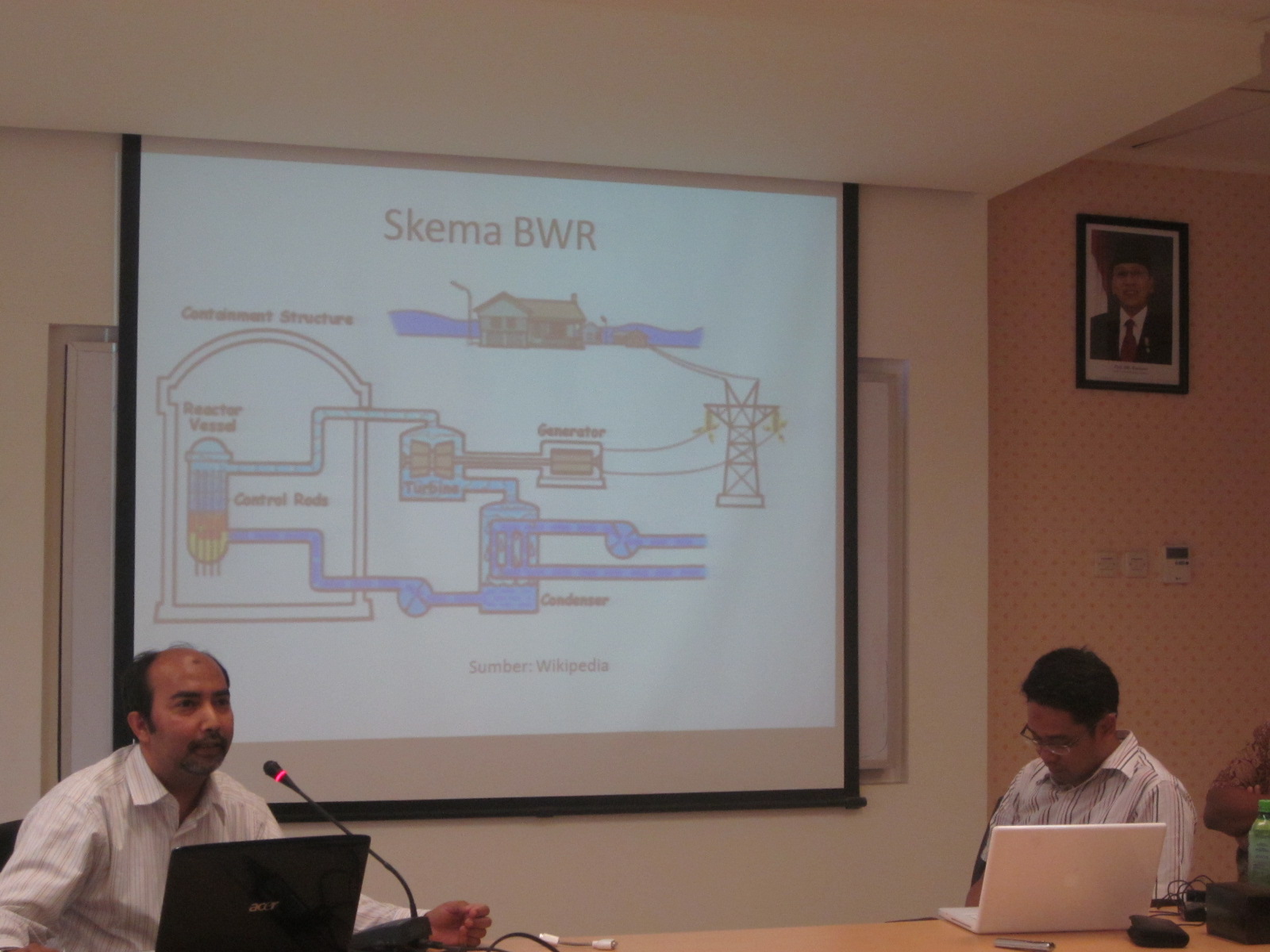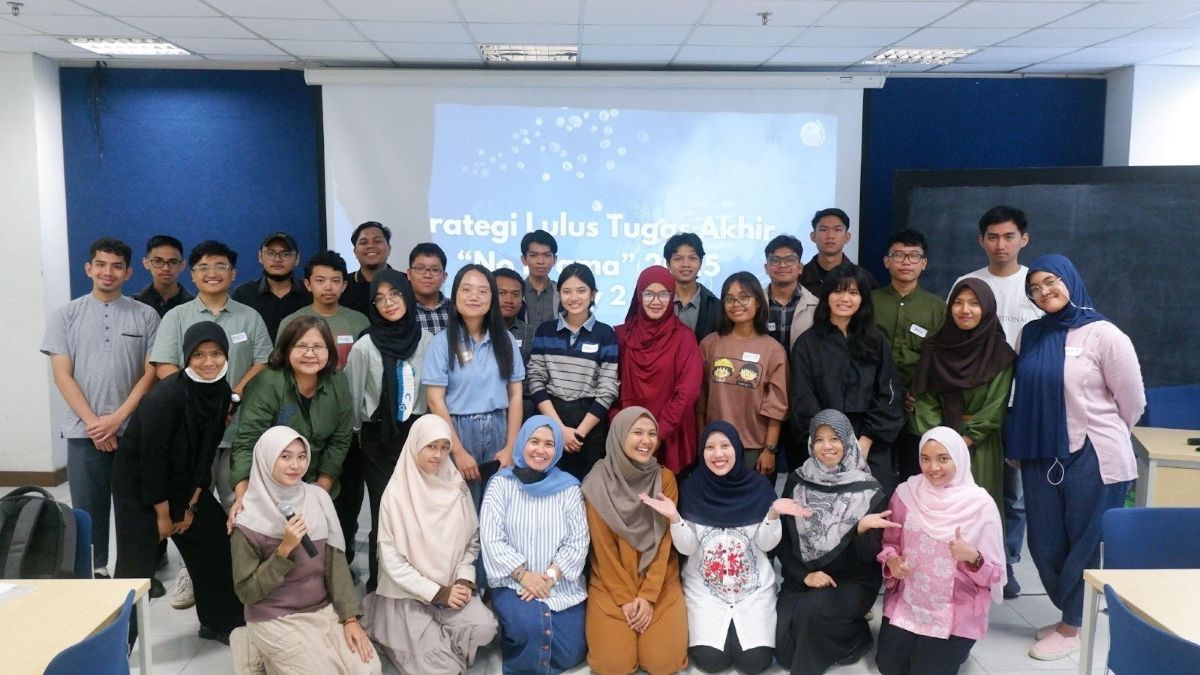ITB Held Press Conference on Japan's Nuclear Reactor
By UKM Student English Forum
Editor UKM Student English Forum

 BANDUNG, itb.ac.id - The recent earthquake devastating Japan was widely monitored by nuclear scientists and enthusiasts due to the explosion in the Fukushima reactor it caused. ITB Nuclear expert Prof. Zaki Su'ud from the Physics Department, along with Dr. Irwan Meilano from Geodesy Department gave a press conference concerning the implications of the explosion.
BANDUNG, itb.ac.id - The recent earthquake devastating Japan was widely monitored by nuclear scientists and enthusiasts due to the explosion in the Fukushima reactor it caused. ITB Nuclear expert Prof. Zaki Su'ud from the Physics Department, along with Dr. Irwan Meilano from Geodesy Department gave a press conference concerning the implications of the explosion.
Irwan elaborated that, as an earthquake-prone country, Japan has already had research centers studying and predicting earthquakes. "The Miyagi earthquake was predicted. What nobody knew was how strong it was going to be."
Nuclear Reactor Explosion
"Japanese buildings and facilitiesn including the nuclear plant, were build to sustain even against an 8.5 SR earthquakes. But they never saw a 9 SR earthquake coming," Zaki explained.
Zaki elaborated that the majority of nuclear reactors in Japan are of Boiling Water Reactor (BWR) type, which is a reactor that utilizes water vapor as the turbine activator. The BWR nuclear power plants have an emergency core cooling system in order to prevent excessive heating in the fuel. It also possess the passive containment cooling system to cool air even without electricity so that it can operate automatically, and the high pressure coolant injection system to anticipate the pipes breaking, among many other emergency safety measures.
 The problem that happened in Fukushima was that several of the emergency systems were broken due to the excessively strong earthquake. Damage in the pump caused decay heat, causing 1-2% excessive heat that requires to be cooled. Heat increase causes an increase in terrace pressure, leading into an around 30cmHg of pressure above the supposed level. This increase forced the engineers to let some of the gas out to reduce it. Problem is, some of the gas being le tout is hydrogen, which caused an explosion when mixed with oxygen.
The problem that happened in Fukushima was that several of the emergency systems were broken due to the excessively strong earthquake. Damage in the pump caused decay heat, causing 1-2% excessive heat that requires to be cooled. Heat increase causes an increase in terrace pressure, leading into an around 30cmHg of pressure above the supposed level. This increase forced the engineers to let some of the gas out to reduce it. Problem is, some of the gas being le tout is hydrogen, which caused an explosion when mixed with oxygen.
Up until this moment, Japanese engineers are still trying to cool down the reactor by spraying sea water and boron water. Sea water spraying was done to because the pump was damaged due to the earthquake, while spraying boron water will prevent the reactor to reactivate itself.
The problem will cede one the engineers successfully cool down the temperature and pressure in the reactor into 280-300 degrees celcius. When the seminar was held, it was still at 500 degrees celcius.
Nuclear Power Plant in Indonesia: Opportunity and Safety Standard
Another important question would be whether Indonesia should continue pursuing nuclear as a viable alternative energy, amidst the constant threat of disasters.
"In Japan, every spot and location is highly prone to earthquakes. Ironically, 40% of their energy sources come from nuclear," Irwan said.
"Unlike Japan, Indonesia has many safe-spots where earthquakes has never happened and has a very low chance of ever happening. These areas are where the power plants shall be built."
Some of the areas Irwan was talking about were Borneo, Bangka-Belitung, and the northern areas of Banten.
"Do not forget the fact that nuclear is a cheap energy source. Electricity from nuclear is priced around Rp. 300-350/kWh. Fourth generation nuclear power plants can even provide electricity as cheap as Rp. 150-200/kWh. This is exactly why many emerging economy governments such as China are pursuing nuclear," Zaki explained. "Additionally, it doesn't emit carbon."
"In building nuclear power-plants, the most important thing is to study the disaster potentials, and then design the power plant to sustain against them. Make sure that the margin of safety is adequate."







